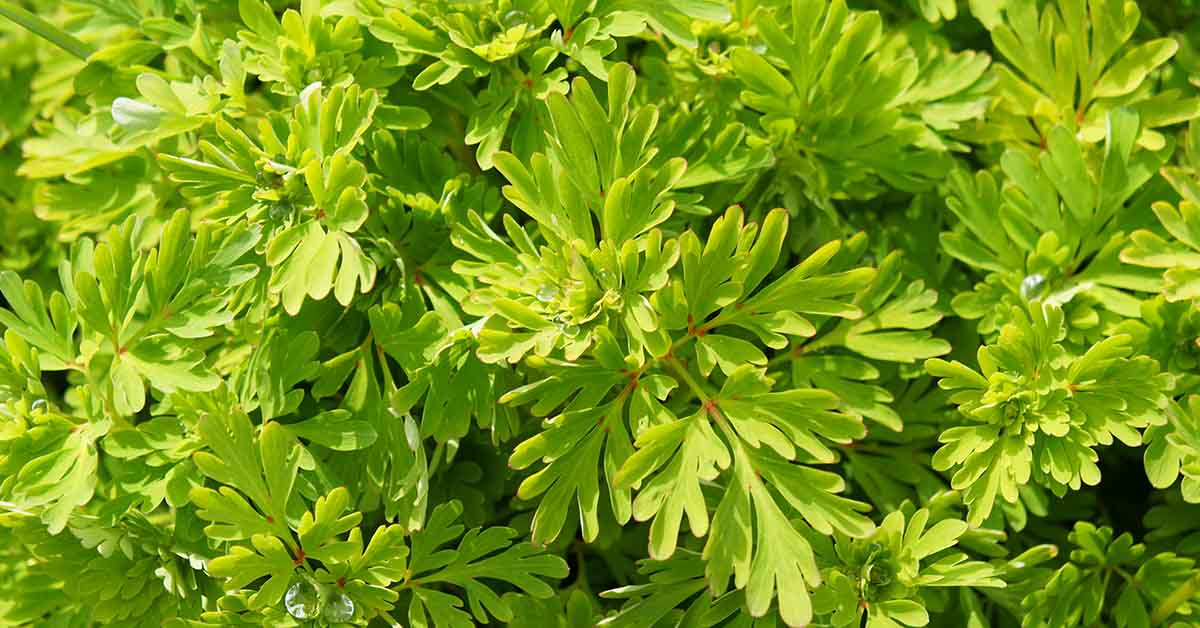Traditional Chinese medicine has used Artemisia annua, or sweet wormwood, for over 2,000 years to treat various ailments, including malaria and fever. This flowering plant is native to Asia but grows in many parts of the world with warm and sunny conditions. The active compound in Artemisia annua is artemisinin. Artemisinin is a key ingredient in antimalarial drugs like artesunate. Beyond its antimalarial properties, some people believe artemisinin has the potential to be a complementary aid in cancer treatments due to its ability to selectively target cancer cells without harming normal cells.
Historically, traditional Chinese medicine practitioners used Artemisia annua to alleviate fevers, including those caused by malaria. They recognized the plant’s properties in alleviating fevers and often consumed it as an infusion or decoction. The use of Artemisia annua in treating malaria led practitioners to isolate and characterize artemisinin, which they found to have remarkable efficacy against the malaria parasite. This discovery not only revolutionized malaria treatment but also opened avenues for exploring artemisinin’s potential in other medical applications, including cancer.
Historical Use of Artemisia annua

Traditional Chinese medicine practitioners deeply rooted the historical use of Artemisia annua. They first mentioned the plant in a Chinese medical text from the 4th century AD, where they recommended it for treating fevers, a symptom often associated with malaria. The traditional method of preparing Artemisia annua involved drying the leaves and then brewing them into a tea. This practice was passed down through generations, with the plant becoming an integral part of Chinese herbal medicine.
Artemisinin and Cancer Treatment

Research into artemisinin’s anticancer effects has been promising, with studies showing that it can slow down tumor growth and induce cell death in cancer cells. Artemisinin works by forming free radicals when combined with iron, which are toxic to cancer cells but not to normal cells. This mechanism suggests that artemisinin could be a valuable supplementary treatment to conventional cancer treatments, potentially overcoming resistance issues seen with chemotherapy drugs. Artemisinin’s unique mechanism of action appears less prone to resistance.
Potential Mechanisms of Action

Artemisinin and its derivatives have been shown to act through multiple pathways to exert their anticancer effects. These include inducing apoptosis (programmed cell death), disrupting cell cycles, and inhibiting angiogenesis (the formation of new blood vessels that tumours need to grow). Additionally, artemisinins can induce a form of cell death caused by an iron overload in the cell. Cancer cells often have higher levels of iron than normal cells, which makes them more prone to artemisinin’s effects. When artemisinin enters a cancer cell, it reacts with the iron present, producing free radicals that damage cellular components, leading to cell death. This ability to target cancer cells specifically without harming normal cells makes artemisinin an attractive candidate for cancer therapy.
Clinical Trials and Research

While there have been some small clinical trials exploring artemisinin’s role in cancer treatment, these studies have typically used artemisinin in conjunction with standard cancer therapies rather than as an alternative. A study involving patients with colon cancer found that those treated with artesunate experienced a higher rate of cancer cell death compared to those who did not receive the treatment. Another study showed promise for artesunate in treating melanoma when combined with another drug. However, more extensive clinical trials are needed to fully understand artemisinin’s potential as a cancer treatment and research currently remains inconclusive.
Read More: Is Cancer Simply ‘Bad Luck,’ or Can It Be Prevented?
Side Effects and Risks

Despite its potential benefits, artemisinin can cause side effects such as skin rash, hearing loss, ringing in the ears, and dizziness. Given the limited research on its use in cancer treatment, patients should consult with their healthcare providers before considering artemisinin as part of their treatment plan.
Artemisia herba-alba and Colorectal Cancer

In addition to Artemisia annua, another species, Artemisia herba-alba, has shown promise in treating colorectal cancer. This plant, commonly known as white wormwood, is traditionally used in North Africa and the Middle East for various health conditions. Recent studies have found that extracts from Artemisia herba-alba can inhibit the growth of colorectal cancer cells and induce apoptosis, suggesting its potential as a complementary treatment for colorectal cancer.
Future Directions

Both Artemisia annua and Artemisia herba-alba highlight the potential of natural compounds in cancer therapy. However, further research is necessary to fully understand the mechanisms and clinical efficacy of these plants in cancer treatment. Developing novel delivery methods for artemisinin could improve its interaction with the body and enhance its effectiveness as an anticancer agent. Exploring the use of Artemisia herba-alba in clinical settings could provide new, less harmful alternatives to traditional chemotherapy for colorectal cancer.
Read More: Could Salmonella Be the Key to Treating Bowel Cancer?

